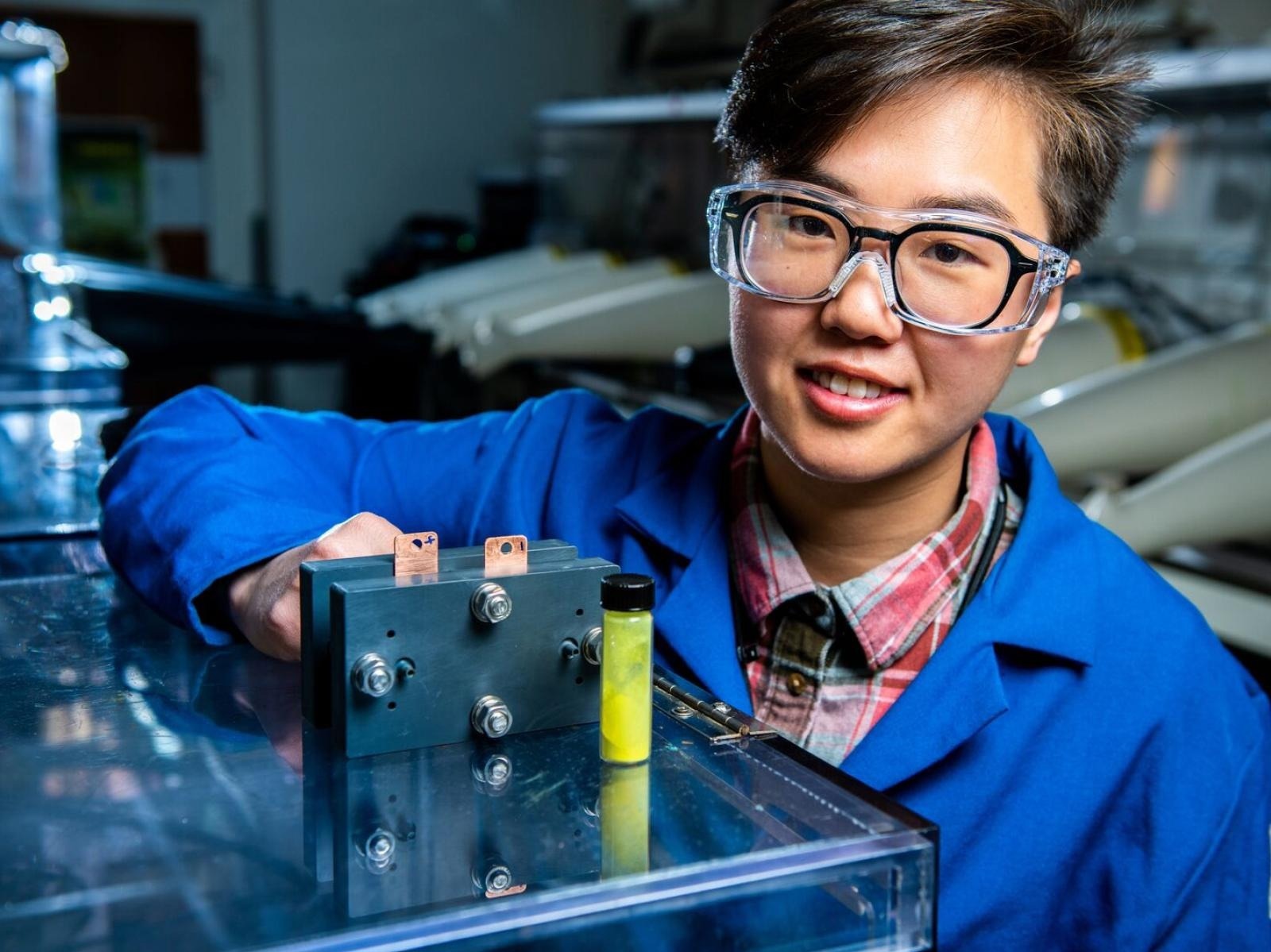The development of large-scale energy storage systems is considered crucial when it comes to future-proofing the electrical grid. The ability to store energy at scale could facilitate the energy transition towards the widespread use of renewables and mitigate high demand and any disruptions caused by extreme weather conditions and other natural phenomena.

Image Credit: Andrea Starr. Pacific Northwest National Laboratory
Batteries are considered the most scalable type of energy storage, but with this comes issues concerning battery costs and longevity, particularly when trying to meet the demands of an expanding market.
Redox flow batteries, also known as flow batteries, are considered easily scalable and stable for large-scale storage use; however, they tend to be cumbersome and heavy relative to energy densities.
Now, a team of researchers based at the Department of Energy’s Pacific Northwest National Laboratory (PNNL) in Richland, Washington, claims to have made a breakthrough in redox flow battery technology using a simple sugar additive that could address key concerns while enhancing grid energy resilience.
Published in the journal Joule, the team reports an innovative method using an additive commonly found in food and pharmaceutical products to develop a flow battery with a record for lifetime use.
This unique breakthrough could open up a new path toward improving the kinetics of aqueous organic flow batteries. This is a brand new approach to developing flow battery electrolytes.
Wei Wang, Battery Researcher, PNNL
Sweetening the Catalyst
The new flow battery demonstrated the ability to maintain energy storage and release capacities over a 12-month period with charge and discharge rates optimized for electrical grid energy storage systems. By improving battery kinetics and creating a novel homogenous catalyst, the team was able to modulate the battery’s reaction pathway for optimal results.
We showed that you can use a totally different type of catalyst designed to accelerate the energy conversion. And further, because it is dissolved in the liquid electrolyte it eliminates the possibility of a solid dislodging and fouling the system.
Wei Wang, Battery Researcher, PNNL
The sweetened catalyst created using ß-cyclodextrin, a glucose derivative found in food and medicine products, helped balance the flow of negative electrons during the battery discharge cycle.
We were looking for a simple way to dissolve more fluorenol in our water-based electrolyte… The β-cyclodextrin helped do that, modestly, but it’s real benefit was this surprising catalytic ability.
Ruozhu Feng, Lead Author of the Study
The researchers reported how β-cyclodextrin balances the electron flow as it receives positively charged protons that, in effect, allow other chemical compounds to flow optimally throughout the system, thus enhancing energy storage capacity while improving battery longevity.
The Case for Flow Batteries
Flow batteries are able to convert chemical energy directly to electricity reversibly; this works as electrolytes containing one or multiple dissolved electroactive elements flow through the electrochemical cell. The energy is stored during the charging cycle in a series of chemical bonds and then later released when attached to an external circuit.
While the energy release can then be used to provide power to electrical devices at small scales, when the scale of the battery is increased, flow batteries can be used as backup energy storage units for the electrical grid. Moreover, these batteries could be used to store excess energy generated by renewable energy sources and then later released to meet energy demands or act as insurance against outages.
Moreover, unlike other battery technology limitations, flow energy units are not limited in their scalability. They can be manufactured small enough to fit on the lab bench all the way up to the size of a football field and beyond.
Flow battery technology has already been used in commercial applications, but the issue with the current technology is that, like other batteries such as lithium-ion technology, there is a dependence on mining rare earth materials, which are expensive as well as environmentally destructive to obtain.
We cannot always dig the Earth for new materials… We need to develop a sustainable approach with chemicals that we can synthesize in large amounts—just like the pharmaceutical and the food industries.
Imre Gyuk, Director of Energy Storage Research at DOE’s Office of Electricity
Going forward, the PNNL team has applied for the patent of their new design and will continue to explore the potentiality of redox flow batteries while testing the capabilities of other compounds, such as fluorenone, to further improve the technology in an attempt to future-proof and redefine the energy storage landscape.
References and Further Reading
- Feng, R. et al. (2023) ‘Proton-regulated alcohol oxidation for high-capacity ketone-based flow battery anolyte’, Joule. Available at: https://www.cell.com/joule/fulltext/S2542-4351(23)00256-8
- Hede, K. (2023) Next-generation Flow Battery Design Sets Records. Available at: https://www.pnnl.gov/news-media/next-generation-flow-battery-design-sets-records
Disclaimer: The views expressed here are those of the author expressed in their private capacity and do not necessarily represent the views of AZoM.com Limited T/A AZoNetwork the owner and operator of this website. This disclaimer forms part of the Terms and conditions of use of this website.